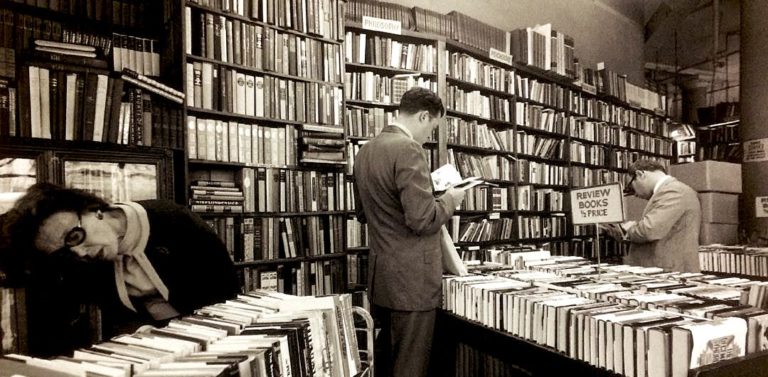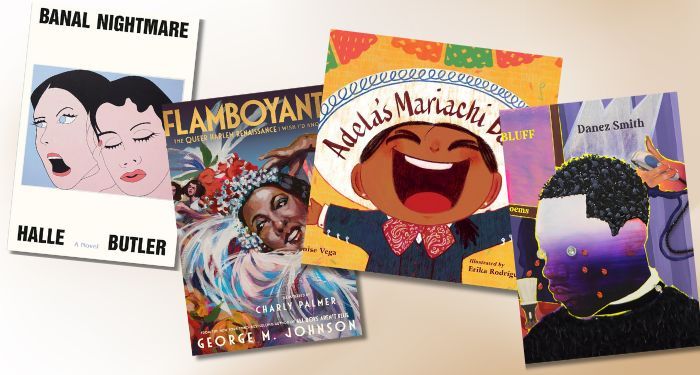 Photo by Simon Bobsien
Photo by Simon Bobsien
Today’s post is by author Midge Raymond.
While collaborative writing is common in many fields—science and academia, for example—it’s less common among creative writers, especially fiction writers. Yet I’ve noticed over the years that many novels are co-written, and I’ve always wondered how, exactly, that process worked—until I found myself co-writing a novel with my husband.
When John and I traveled to Australia several years ago, we embarked on a four-day hiking/camping trip to a remote island off the coast of Tasmania with three other couples, most of us strangers to one another. At one point, after learning we were both writers, our companions joked about whether we would one day write about them—and of course, we joked back that we probably would.
Then, John actually did get an idea: The location of this journey (middle of nowhere), the setting (isolated and surrounded by wild animals), and the history (the island was a former convict settlement that now plays a major role in preserving the endangered Tasmanian devils) would be a great setting for a suspense novel. Though we’re each individually published writers, we share the same passion for the environment and have read nearly every word of each other’s work anyway—so we decided to write this book together.
Not every couple can write together—but on the other hand, it can be a natural turn of events when shared ideas happen. For Graeme Simsion (The Rosie Project) and Anne Buist (Locked Ward), married for decades and both successful individual writers, their first collaboration, Two Steps Forward, was inspired by walking the Camino de Santiago together. For Charlene Ball and Libby Ware, married writers whose co-authored mystery novels are published under the name Lily Charles, their first collaboration came to them “after saying to each other several times: ‘We really should set a mystery at the Florida Antiquarian Book Fair.’”
A spark of an idea can lead to wonderful things for co-authors—but whether your writing partner is your spouse, best friend, or a colleague, you do have to proceed with caution. Here are a few tips.
Know when to join forces—and when not to
Having a shared idea may seem to lead naturally to collaborative writing—but this is not always the case. You’ll want to be sure that you and your collaborator are on the same page, so to speak, from the beginning. Before diving into the first chapter, have a conversation about expectations and the collaborative process. What unique skills do you each bring to the project—and how do you choose who tackles which tasks? How do you define success as a team (finishing the book, getting it published, self-publishing)? And, most important, how will you plan to deal with conflict and disagreements?
Ball and Ware caution, “You need to be committed to the joint process from the beginning and to realize that it’s different from writing on your own. When your writing partner suggests a change or wants to take out something you wrote and like, you can either give your reasons for why what you wrote is right for that scene, or you can give it up gracefully, or you can propose a compromise.”
Commitment to both the project and the relationship goes a long way. Buist says of disagreements when writing with Simsion, “We’ve not really had any that a discussion couldn’t fix”—to which Simsion adds, “I just let her win”—to which Buist adds, “No, I give in.” In short, it’s all about good humor and compromise, and you’ll need to be sure you’re both willing to bend if and when you need to.
And if you—or your potential co-author—are accustomed to (or prefer) writing solo, or if you have unwavering beliefs about any aspect of the writing or getting-published process (for example, disagreements over what you want in an agent or an unwillingness to self-publish), you may not be good candidates for collaboration.
Divide and conquer
When you have a shared idea, be sure you’re also prepared to share the work. And keep in mind that, depending on your goals, the work means not only writing but could also mean outlining, research, querying agents, editing, promotion, and myriad other aspects of the writing and publication process.
Sometimes these divisions of labor come naturally. Of Simsion and Buist, for example, Simsion is more of a planner and uses index cards for a book’s outline. “I tend to drive the process in terms of what we’re doing at any particular time,” he says, “but we are equal partners in what goes on those cards.”
In our case, John is great at plot, theme, and seeing the big picture of a story; I’m more scene-focused and detail-oriented. So while we did the early brainstorming together, he ran with the characters and plot for a while and sketched an outline; then we’d do more brainstorming. Next, he’d write a chapter that was fairly skeletal, and I’d flesh it out with details about the setting, characters, and story, which we’d both figured out together.
Ball and Ware have a similar process: One of them writes a chapter, then emails it to her wife, who then “edits and amplifies it, then writes the next chapter and emails it back.” This worked well for their first mystery, until Ball locked one of the characters in a basement with a dead body and no way out. “After that, we decided to plan together what was going to happen next.”
Though they share the writing, Ball feels more connected with the character of Emma in their bibliomystery series, while Ware identifies more with Molly—and for many writers, having two main protagonists can lead to a natural division of labor. For their books Two Steps Forward and Two Steps Onward, Simsion and Buist each took on a character, with Simsion writing the character of Martin and Buist writing Zoe—then Buist would edit Zoe’s words in Martin’s chapters and Simsion would edit Martin’s words in Zoe’s chapters. However, in their third collaboration, The Glass House, for which the story relies upon Buist’s thirty-five years of expertise in the psychiatric field, Buist wrote most of the novel, followed by a “very long editing process” with their publisher. “The patient stories were left to my experience,” Buist says, “but Graeme then molded them into a story that had an arc within the chapter.”
Even after the writing is done, collaborators will need to consider how to handle editing—including with agents and publishers—as well as how to divide publication and promotion tasks. In our case, I happily handled the revision and review of copyedits for Devils Island, since John isn’t as detail-oriented and it’s the kind of thing I enjoy. In turn, being technically skilled (where I decidedly am not), John created our website.
Ball and Ware similarly divide post-writing tasks, with Ware taking charge of social media and Ball focusing on other promotional opportunities—and Simsion and Buist play to their individual strengths as well. “Graeme tends to handle the business and organizational side,” Buist says. “But we do the interviews, talks, and signings together.”
Put the relationship first
Whether you’re friends, colleagues, or a couple, part of successful collaboration is being willing to put the relationship first. This can mean anything from agreeing to compromise to recognizing when to quit if the collaboration or project isn’t working out. You’ll want to be sure you’re able to quit a project without worrying about quitting the relationship.
For collaborators who are acquaintances or colleagues, having a written contract might be the best way to develop and define expectations, deadlines, and exit strategies. This need not be a formal agreement drafted by the writers’ attorneys but rather a list or outline that, simply by being written down, clarifies goals and expectations.
For close friends or partners, the process is usually pretty informal. John and I, for example, didn’t think of any of the potential pitfalls until they were upon us—yet we were both enthusiastic enough about the project (and, fortunately, committed enough to our marriage) to keep moving forward.
When it comes to preserving a relationship, the process of critique can be a delicate one. Buist suggests, “Work out in advance how to deliver feedback.” This is especially important if you’re in a close relationship; as Simsion says, “We’re not as kind as we might be to someone at arm’s length. Recognize that you’re on the same side and that the relationship is more important than the book.”
Having a sense of humor helps, too. John always laughs off my (good-natured) complaints of him creating four characters who have the same name, or when he inadvertently changes characters’ careers or hair colors during the course of the book. Knowing your strengths—and especially knowing your weaknesses—makes it easier to come to agreement, whether it’s about the project or the process. Speaking of agreeing—when Buist says the biggest challenge of writing together is “Graeme criticizing my vomit draft,” Simsion confirms that his biggest challenge is “trying to fix Anne’s vomit draft.” If you know what the challenging parts will be and how you’ll react to them, getting through to the other side is that much easier.
Enjoy the journey
At the end of the day, writers collaborate because it’s fun. For Simsion and Buist, the writing process usually begins with a bottle of wine. “We leave the day behind and relax,” Buist says. “It’s a time we can be creative but also communicate well. It’s ideal for story outlining, exploring themes, and nutting out problems.”
And while the wine time is relaxing, it’s also part of “an ongoing practice,” says Simsion. “It also means we keep talking to each other about the book, which is important to stop us going off in different directions.”
Writing together, Simsion says, has been good for their marriage. “I think that having something you enjoy doing together, making plans around it, actually doing it and, as a bonus, getting affirmation for doing it, is good—maybe even essential—for a marriage.”
Ball and Ware agree. “It has added a common interest that we enjoy talking about even when we’re not officially writing or deciding on what should happen next. And it’s fun.”
As for John and me, we wrote a second novel together and are working on a third. We hold important writerly meetings during happy hour, and are planning a book tour during which we’ll fit in some family and friend reunions. Writing, selling, and promoting a book is hard work, to be sure, but doing it together can help divide the workload and double the joys.













 Bengali (Bangladesh) ·
Bengali (Bangladesh) ·  English (United States) ·
English (United States) ·